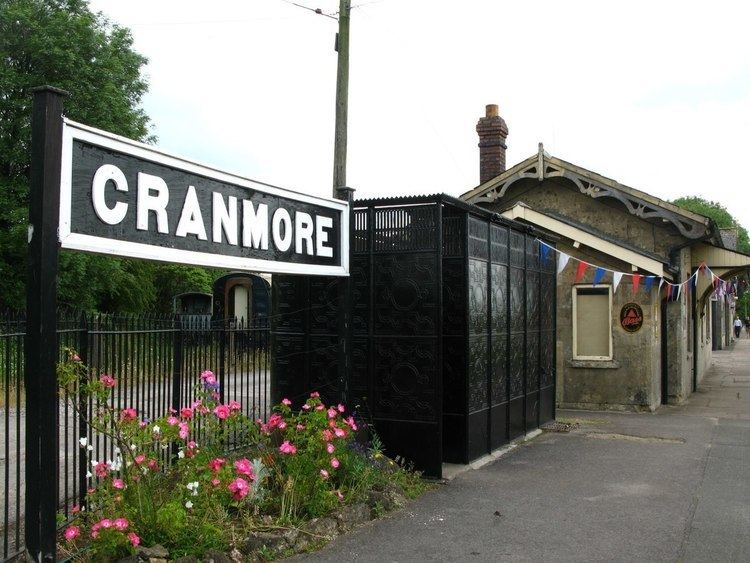Length 2 ⁄2 mi (4.0 km) Closed to passengers 1963 | 1 March 1862 Extension opened Phone +44 1749 880417 Opened 9 November 1858 | |
 | ||
Original gauge 7 ft ⁄4 in (2,140 mm) Brunel gauge Preserved gauge 4 ft 8 ⁄2 in (1,435 mm) standard gauge 1874 Converted to4 ft 8 ⁄2 in (1,435 mm) standard gauge Similar West Somerset Railway, Cran railway station, Avon Valley Railway, Yeovil Railway Centre, Mendip Vale railway st | ||
East somerset railway spring steam gala 2016
The East Somerset Railway is a 2 1⁄2-mile (4 km) heritage railway in Somerset, running between Cranmore and Mendip Vale. Prior to the Beeching Axe, the railway was once part of the former Cheddar Valley line that ran from Witham to Yatton, via Wells, meeting the Somerset and Dorset Joint Railway at the latter station, in-between.
Contents
- East somerset railway spring steam gala 2016
- East somerset railway the way we were weekend 27 08 2016
- History
- Preservation
- The route of the ESR
- Events
- References
East somerset railway the way we were weekend 27 08 2016
History
The East Somerset Railway Company was incorporated under the East Somerset Railway Act on 5 June 1856 and was built as a 7 ft 1⁄4 in (2,140 mm) broad gauge line. The line was originally between Witham railway station and Shepton Mallet and this line opened on 9 November 1858. It was planned by Mr. Brunel and built by engineer Mr. Ward and contractor Mr. Brotherwood. The station buildings at Shepton and Witham Friary, as well as the bridges along the route, were constructed of Inferior Oolite from nearby Doulting Stone Quarry. Shepton was now 129 miles (208 km) from London by rail, a journey of just over four hours.
Four years later the line was extended to Wells; this part of the line was opened on 1 March 1862. The East Somerset Railway was bought by the Great Western Railway on 2 December 1874, shortly after it was converted to 4 ft 8 1⁄2 in (1,435 mm) standard gauge.
In 1878, the GWR joined the East Somerset line with the Cheddar Valley line to Wells, which had been built by the Bristol and Exeter Railway, by obtaining running rights over a section of the Somerset and Dorset Joint Railway and running its trains through the S&DJR Wells station at Priory Road, though GWR trains did not stop at Priory Road until 1934. At this stage, the main traffic became the through trains from Yatton to Witham and the East Somerset Railway station in Wells closed, with Wells (Tucker Street) becoming the station for the city on the line. The Yatton to Witham service remained in use with the GWR and later BR until passenger service finally ceased in 1963 as a result of the Beeching Axe, however trains carrying bitumen continued until 1985.
Preservation
In 1971/72, the artist David Shepherd came across, viewed and later purchased Cranmore station and a section of the track to house and run his two locomotives; the BR 2-10-0 Class 9F No. 92203 "Black Prince" and BR Standard 4 4-6-0 No. 75029 'The Green Knight'. In 1973, the line opened offering Brake Van rides before extending first to Merryfield in 1980 and then to Mendip Vale and into Cranmore station itself in 1985.
Today the railway plays host to a variety of preserved diesel and steam locomotives.
The East Somerset Railway only operates the line between Cranmore, Cranmore West, Merryfield Lane Halt and Mendip Vale. Between the last two sections, the train runs through the Doulting Railway Cutting Site of Special Scientific Interest. The section between Cranmore and the mainline is used for heavy quarry traffic to the nearby Merehead Quarry.
In 1991, a new station building was constructed at Cranmore which now includes a cafe, booking office, gift shop and toilets. The platform then extends to the old station which is now a museum. On the platform is an old red telephone box which incorporates a stamp machine and post box. It was made around 1927 and is one of only 50 made to that design. Opposite the platform is a signal box dating from 1904 and is the standard GWR pattern of the period. Close to Cranmore station are the engine sheds and workshop (known together as Cranmore Shed) which were built in 1973, (during the preserved line's restoration at the time).
An order by the Secretary of State for Transport in 2005 allowed a further 600 metres of track to be used.
On 25 March 2007, the East Somerset Railway announced that it had received a £7,500 grant from Shepton 21 Group, a local organisation, set up to regenerate the area around Shepton Mallet. The money was to be spent on conducting a feasibility study into extending the line towards Shepton Mallet, with a possible new terminus at Cannards Grave, on the outskirts of Shepton Mallet.
The route of the ESR
Events
The railway hosts several events throughout the year
